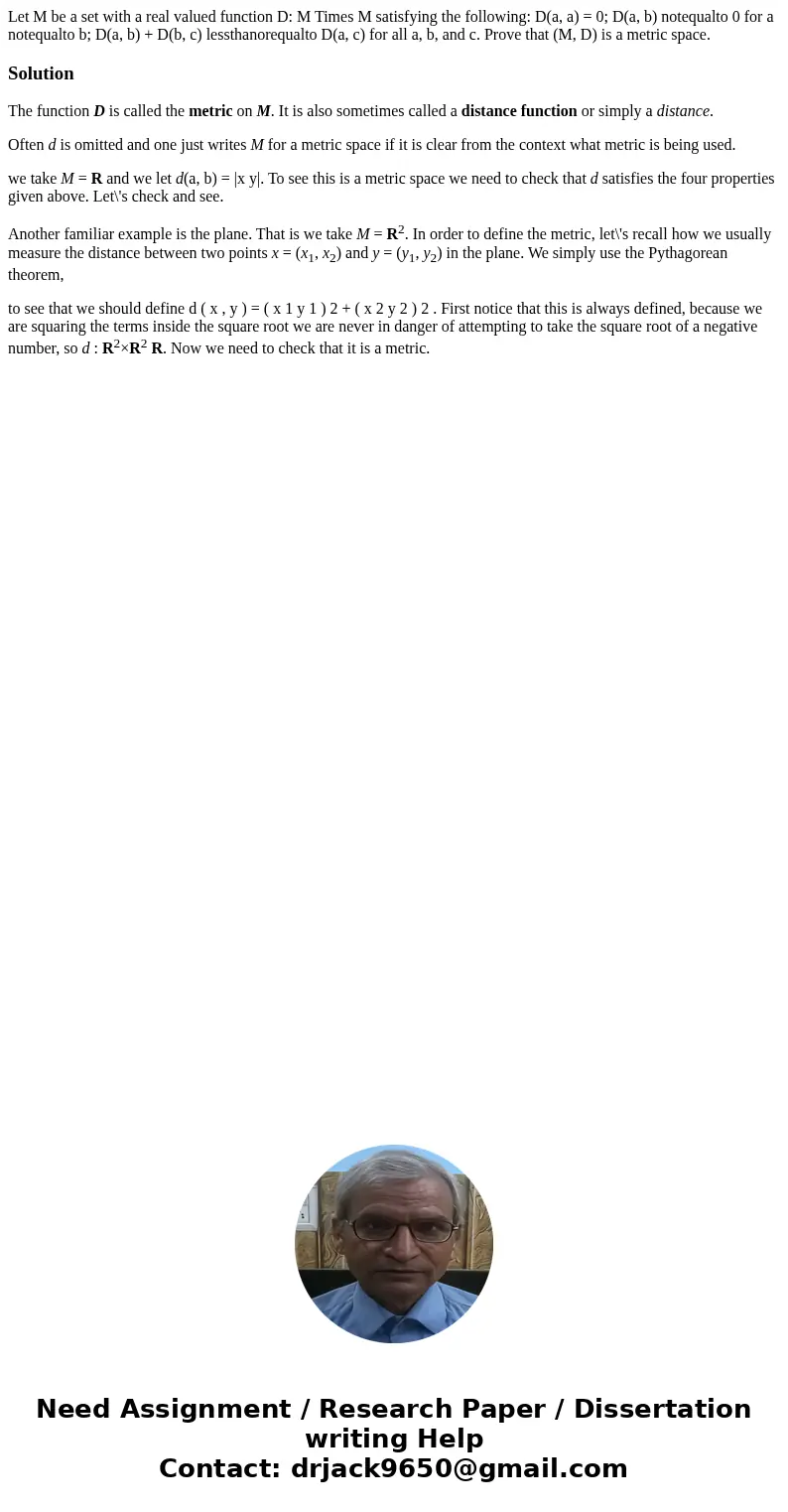Let M be a set with a real valued function D M Times M satis
Solution
The function D is called the metric on M. It is also sometimes called a distance function or simply a distance.
Often d is omitted and one just writes M for a metric space if it is clear from the context what metric is being used.
we take M = R and we let d(a, b) = |x y|. To see this is a metric space we need to check that d satisfies the four properties given above. Let\'s check and see.
Another familiar example is the plane. That is we take M = R2. In order to define the metric, let\'s recall how we usually measure the distance between two points x = (x1, x2) and y = (y1, y2) in the plane. We simply use the Pythagorean theorem,
to see that we should define d ( x , y ) = ( x 1 y 1 ) 2 + ( x 2 y 2 ) 2 . First notice that this is always defined, because we are squaring the terms inside the square root we are never in danger of attempting to take the square root of a negative number, so d : R2×R2 R. Now we need to check that it is a metric.

 Homework Sourse
Homework Sourse